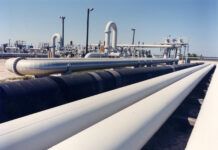Tallgrass Energy LP has announced plans to develop a new crude oil pipeline from Cushing, Oklahoma, to the St. James, Louisiana, refining complex, as well as a separate new export-capable liquids terminal strategically located near the mouth of the Mississippi River.
The proposed Seahorse Pipeline is expected to be 30 inches in diameter and approximately 700 miles long, with the capacity to transport up to 800,000 barrels of crude oil per day from Cushing to the Louisiana Gulf Coast. The pipeline will operate as a common grade batch system that, along with the Tallgrass Energy Pony Express Pipeline, will ensure domestic refiners and international markets have access to “clean” barrels from five different production basins.
The proposed new terminal, Plaquemines Liquids Terminal, or PLT, is a joint development project with Drexel Hamilton Infrastructure Partners LP and is being structured as a Public-Private Partnership with the Plaquemines Port & Harbor Terminal District, a Louisiana state agency.
The terminal is expected to be fully operational in the second quarter of 2020 and is permitted for up to 20 million barrels of storage. PLT will have the ability to fully load and unload Post-Panamax vessels (each with a capacity of about 1 million barrels) and barges on its multiple deep-water docks. Tallgrass anticipates building a separate offshore pipeline extension that would give PLT the added capability of loading Very Large Crude Carriers by the third quarter of 2021.
“The Seahorse Pipeline and Plaquemines Liquids Terminal projects build on our strategy to provide diversity of supply and greater market optionality to our customers,” says Tallgrass Energy President and CEO David Dehaemers Jr. “These projects provide highly desired take-away capacity from Cushing to the St. James refining complex, providing interconnectivity to more than 2.5 million barrels per day of refining capacity and access to international markets.”
Tallgrass Energy is a midstream energy infrastructure company operating across 11 states with transportation, storage, terminal, water, gathering and processing assets that serve some of the nation’s most prolific crude oil and natural gas basins.









